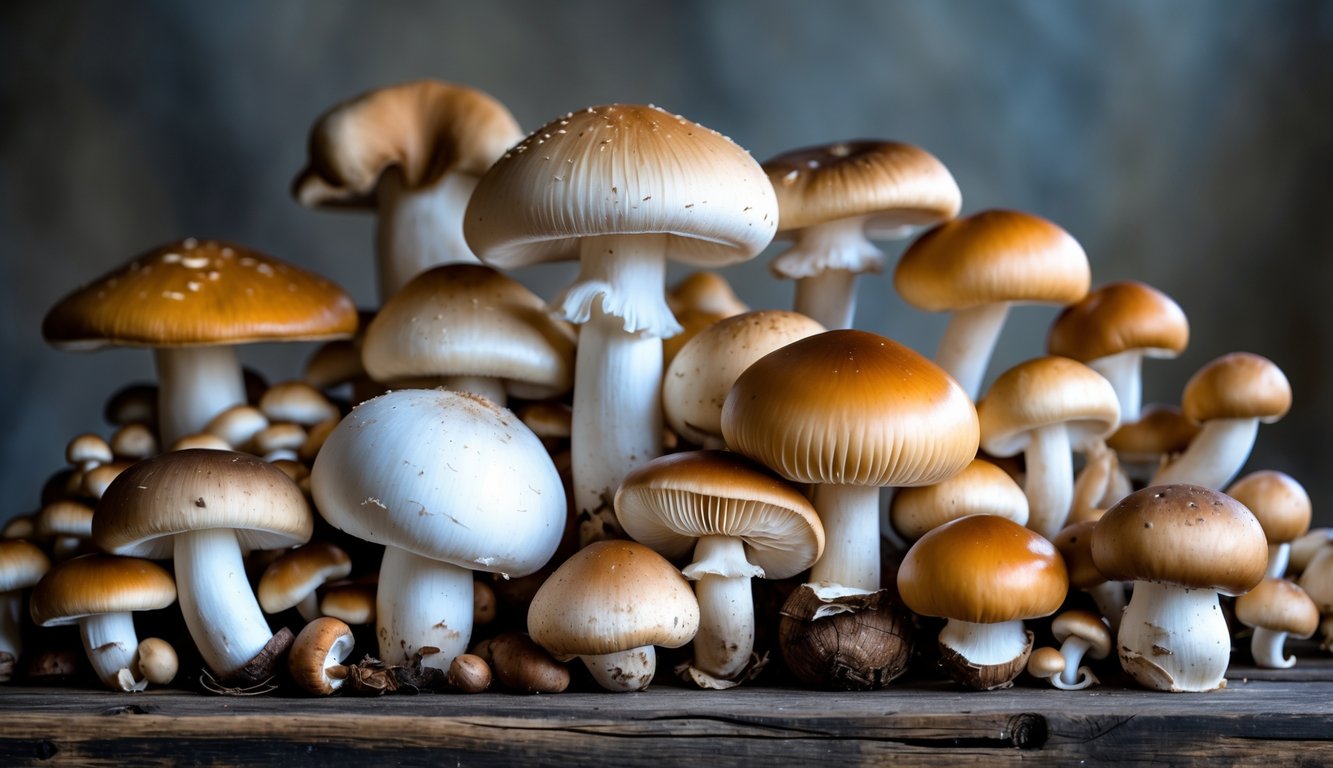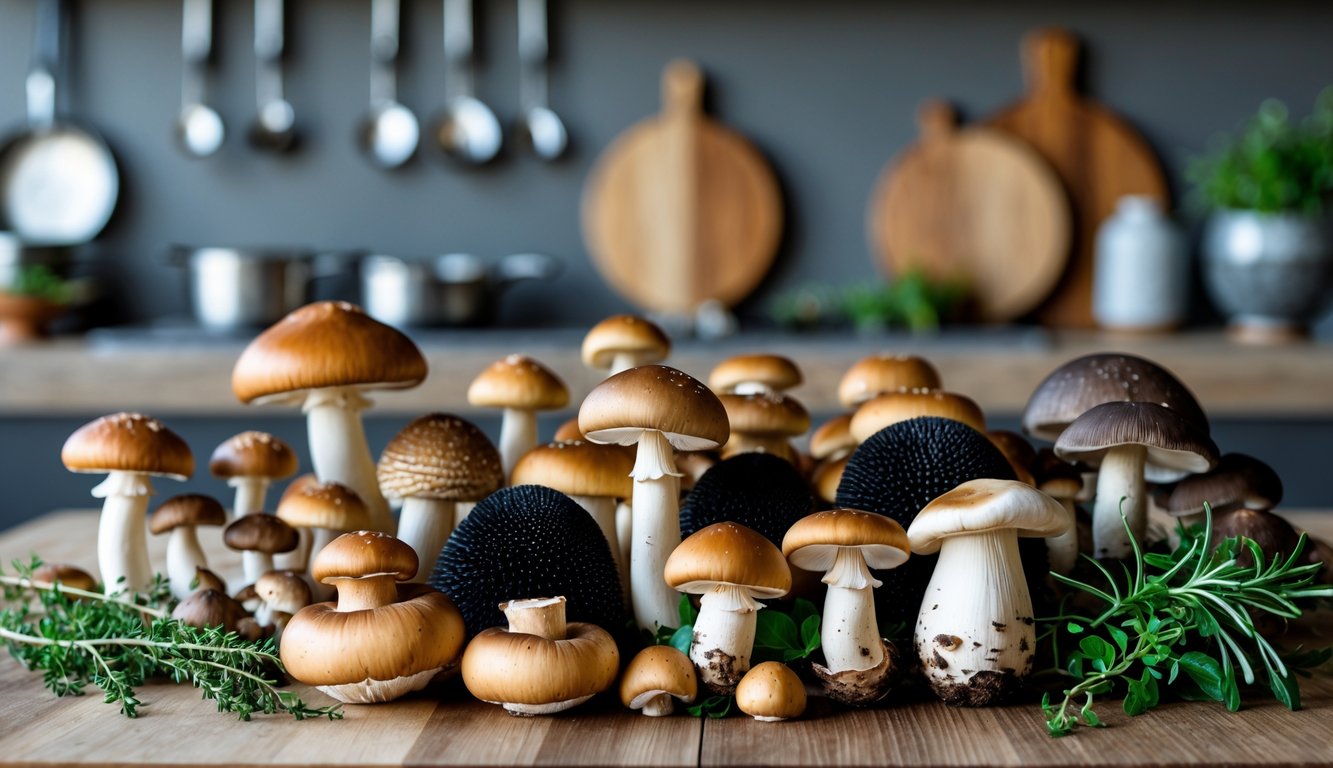
Classic Mushrooms With Hidden Depths

Here’s what nobody talks about: portobellos, creminis, plain white buttons—everyone calls them boring, but roast them in a ton of butter and suddenly there’s flavor you never noticed. I didn’t buy it either until I tried it myself. Now I’m suspicious of every “bland” claim.
Portobello And Its Hearty Bite
Halfway through pulling a tray from the oven, my mother-in-law’s on the phone arguing about beef and cholesterol. Meanwhile, portobello mushrooms are sitting there, pretending to be steak on every vegan food blog. FSR Magazine did some chef poll in 2022 and portobellos came out on top for umami-driven vegan mains. I mean, they’re not steak, but they’re not nothing either.
Texture-wise, you can’t just mash them up; they hold their shape. Marinate them overnight—soy, balsamic, whatever. By dinner, the gills soak up everything and you get this firm, meaty chew. Some steakhouses hype it up as an “experience” (but I get them for $2 at the supermarket). I’ve ruined them by slicing too soon—learned the hard way, let them rest or you’ll end up with a puddle of gray water.
Raw portobellos taste like damp cardboard. But grill them and even die-hard steak fans come back for seconds.
Cremini And Baby Bella
No one in my family knew what cremini mushrooms were. Suddenly they’re “baby bellas,” which is just marketing—they’re not baby anything, just teenage agaricus bisporus. At a chef demo last year, everyone agreed creminis taste richer than white buttons, earthier but still mild enough for picky eaters who think all mushrooms are “too funky.”
Creminis roast better than white mushrooms—less shrinkage, more browning, and the texture stays dense. My brother fries them for pizza night and claims they “don’t leak as much” as white buttons. Not scientific, but he’s usually right about kitchen disasters. Chefs on mushroom forums swear by creminis for stuffing because the caps hold up in the oven, unlike their mushy siblings.
Random aside: I once found a cremini that smelled like lemons. No idea why. Maybe it sat next to a lemon in the fridge? Mushroom aromas are weird.
The Humble White Button Mushroom
Forget what food magazines say about white buttons being “neutral.” Over 90% of U.S. mushroom sales are these, so I asked my culinary school instructor—she’s cooked for James Beard nominees—why bother? She said, “They’re consistent, soak up seasoning, and anyone who says they’re bland just hasn’t browned them hard enough or tried them raw with lemon and salt.” She’s not wrong.
One time I tried fermenting thin-sliced white buttons out of boredom. Turns out, agaricus bisporus gets rubbery in brine. Don’t do it. But roast or sauté them hot and they get this nutty, savory thing going that works in stews, eggs, pizza, whatever. Show me a grocery cart without a pack—I dare you—especially since white buttons are cheap and everywhere.
If you want a mushroom that fits everything and browns without fuss, these are it. They’re the cast-iron skillet of mushrooms—nobody brags about them, but everyone uses them.
Lesser-Known Gourmet Varieties Chefs Love

Every time I’m scanning a restaurant prep list, it’s not the flashy morels or lion’s mane that trip me up—it’s the weird, under-the-radar stuff. There’s always that chef dropping names like black trumpet or shimeji just to sound cool. Nobody at home is sautéing beech mushrooms, and enoki? That’s the weird bundle in the produce section nobody knows what to do with.
Exotic Enoki And Beech Mushrooms
Enoki. I mean, have you seen these things? They look like noodles that wandered off from a ramen bar and just never came back. First time I tried them in a salad, all they did was wrap around my tongs and refuse to cooperate. Then I chucked a handful into some hot broth for, what, maybe a minute (any longer and you’re basically eating limp spaghetti), and suddenly there’s this wild crunch and a hint of umami that sneaks up on you. Chefs seem obsessed with enoki—probably because it’s all about texture, not flavor. Throw some over grilled fish and it somehow feels trendy, even though it’s ancient in East Asian cooking. Go figure.
Beech mushrooms? Oh, here’s where things actually taste like something. Brown beech, especially. Nutty, mild, earthy—if you’re into that. R&R Cultivation claims they’re “gourmet,” lumped in with shiitake and lion’s mane, but I don’t see anyone lining up for a beech mushroom burger. Usually they end up in stir fries or stews, which is weird because they’re criminally underused. They don’t get mushy, they look adorable on a plate (unlike enoki, which clumps into a sad little blob), and, for some reason, kids think they’re edible trees. I don’t get it either.
Wild Black Trumpet And Shimeji Varieties
Wild black trumpets. Every forager I know brags about their haul, but nobody ever wants to share. Especially chefs—those mushrooms are so delicate, they’re practically dust by the time you say “risotto.” I always think of them as the wood ear’s moody sibling: wood ear is all about texture (and, let’s be real, not much else), but black trumpets? They blow up the umami scale—smoky, intense, that “woodsy” thing food writers never shut up about.
Shimeji, though. Little clusters that look great on Instagram, and actually survive a hard sauté. I love shimeji mostly because they don’t fall apart when you hit them with heat. Eat them raw? Don’t. They taste like metal and regret. But a quick cook transforms them completely. Japanese cooks have this figured out, but I sneak shimeji into pasta and eggs for that nutty finish. Mushroom Pete says they’re still “niche,” but every decent kitchen I’ve worked in hides a stash somewhere, probably to keep the line cooks from pilfering the whole box.
Some chef once tried to convince me cordyceps belonged in this lineup, but, come on, unless you’re shopping for supplements, cordyceps is just hype. Shimeji? Still underrated. Wildly so.



